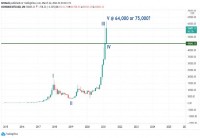|
Implications of New Law for Derivatives Over-the-counter derivatives are one of the areas heavily affected by the massive regulatory bill US Congress is preparing to pass. We present a discussion here by Scott Alintoff and John Avery, both from SunGard. This is an edited version of their paper, with added new commentary. They argue that OTC derivatives markets will come to resemble futures markets and participants should start preparing now. Mr. Alintoff is chief operating officer of VPM, SunGard's alternative investments business. Prior to joining SunGard, he worked for a large option market making firm on the American Stock Exchange and was head of finance for a Commodity Pool Operator. Mr. Avery is a partner in the financial services practice of SunGard Consulting Services. He has been working on software applications in the front-, middle- and back-office at both sell-side and buy-side Wall Street firms for more than 13 years. Scott Alintoff: ¢â‚¬Å“Many players have no issue with the concept of central clearing for derivatives contracts, but the big question is whether the central counterparty can actually measure the counterparty risk and be responsive to it. In response to the most severe financial crisis in the United States since the Great Depression, the Obama Administration released a financial regulation overhaul plan in 2009. This landmark position paper sought ¢â‚¬Å“to restore confidence in the integrity of our financial system and put the national economy on track to a sustainable recovery. It stated that ¢â‚¬Å“we must build a new foundation for financial regulation and supervision that is simpler and more effectively enforced, that protects consumers and investors, that rewards innovation and that is able to evolve with changes in the financial market Along the lines of the plan, separate bills were introduced in the US House of Representatives and Senate. Congress is still working on reconciling the different versions and various amendments. As part of the President's plan, credit default swap (and interest rate swap) markets and all other over-the-counter derivatives will be subject to comprehensive regulation. Although the final legislation has not been turned into law, the Obama administration has devoted an enormous amount of time and resources to developing the framework reflected in the proposal and OTC reform received bipartisan support from the onset. While the final laws will certainly reflect changes typical of the legislative process, these will likely not differ much from the advice document issued by the Executive Branch on June 16, 2009, on which we base our analysis. At present, legislators are scrambling to get something into the President's hands for signature before July 4th. Unfortunately, rushing to get this right will likely ensure that they get it wrong on some level. There is a gap between the House and Senate bills regarding how over-the-counter derivatives, credit default swap transactions in particular, will be handled. But it appears that the main focus of concern is in the area of counterparty risk. Many players have no issue with the concept of central clearing for derivatives contracts, but the big question is whether the central counterparty can actually measure the counterparty risk and be responsive to it. Meanwhile, it is not an overstatement to say that the proposal will present significant new responsibilities for market participants. We argue below that there are also important competitive opportunities. What¢â‚¬â„¢s Coming Here are the highlights of the proposal as it relates to OTC derivatives and related operations and infrastructure:
What will the aftermath look like? In five years after the regulatory law passes, we envision a world where cleared OTC derivatives markets and operations will behave much more like the listed derivatives, that is, futures and options markets. In essence, a CDS is really an option on credit. OTC derivatives are going to become more transparently priced. As such, they will require the same margining and additional operational processes and controls as exchange traded futures and options contracts do today. John Avery "The alternative investment community will likely be trading more standardized, cleared OTC derivatives contracts over the next three to five years. As a result, this community will seek to take advantage of pricing and liquidity opportunities in these cleared markets, as well as incorporate cleared OTC products into new and existing trading strategies. Specific areas of impact we already see as a result of the proposal are:
Preparing for the Future The final legislation will certainly dictate institutional changes for most market participants, bringing significant new responsibilities. While the responsibilities will require technological and operational changes, they also create important competitive opportunities. This is a chance to increase firms' capabilities because of the improvements required in operational efficiency and control. In assessing organizational action in response to the proposed legislation, market participants must first review and interpret the expected requirements and then take stock of their existing operations and technology capabilities with regard to such areas as:
Employing a comprehensive program for evaluating, designing and implementing appropriate infrastructure solutions for the changing world of OTC derivatives will help firms assess their current capabilities and institute any necessary operational and/or IT changes. Done right, this could significantly enhance a firm's competitiveness. The first market opportunity is in preparing for OTC derivatives clearing and transparency. The time to act is now, while recognizing that the improvements can be best achieved via an incremental approach. Three steps, in the following order, are key to being prepared:
We believe that a phased approach will be the most prudent in order to manage the risk of change, because many affected processes and systems will be business-critical and essential to continued operations. Each phase of deployment should ensure that adequate testing and quality controls are used to mitigate operational risks. |
|
This article was published in Opalesque Futures Intelligence.
|





 RSS
RSS











